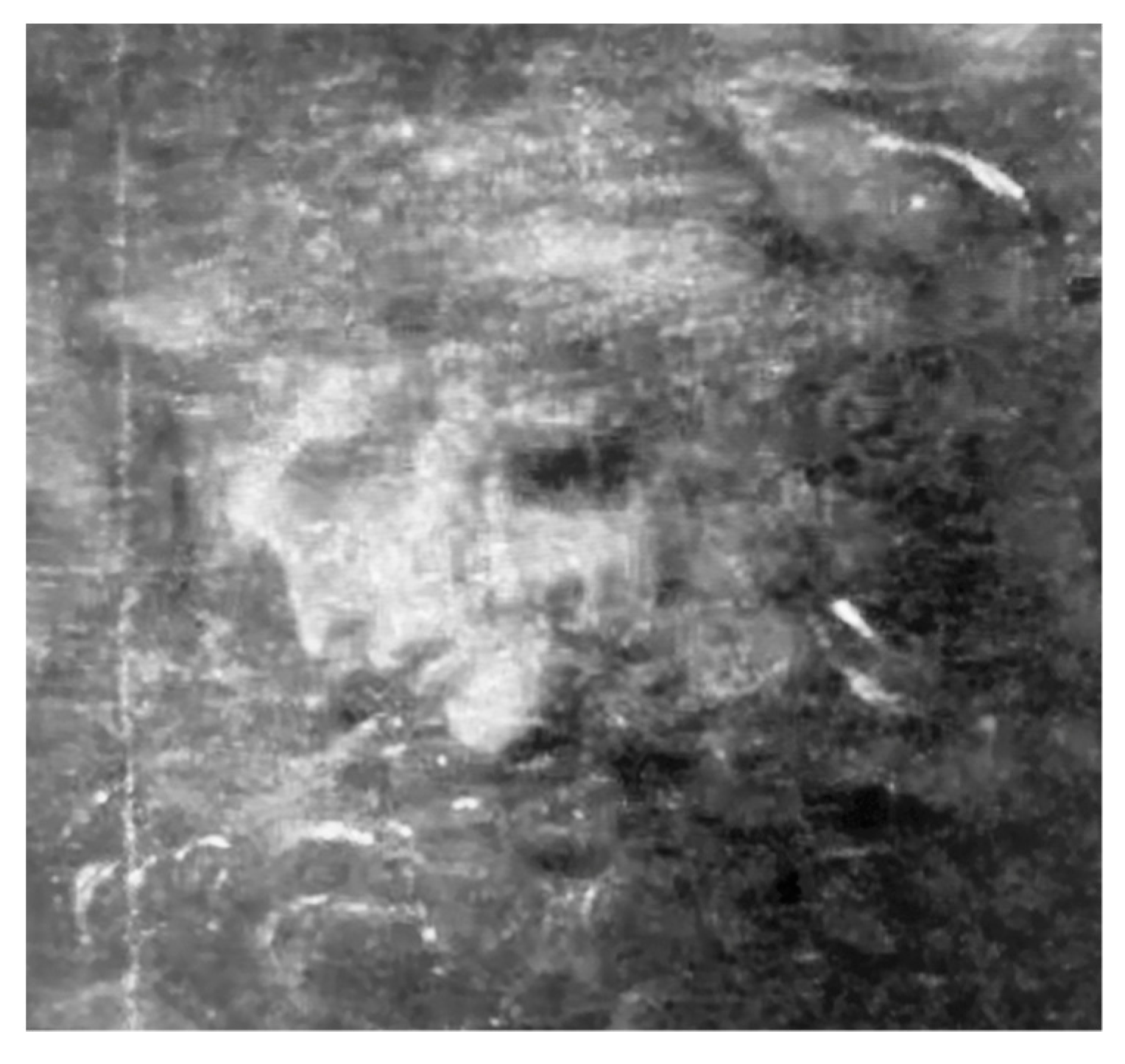Informational Aesthetics and the Digital Exploration of Renaissance Art †
Abstract
:1. Introduction—The Restricted Gaze of the Real-World Viewer
2. The Pioneers of Art Science and Digital Aesthetics
3. The Rise of Digital Art and NFTs
4. Digital Archaeology—Uncovering the Hidden Worlds of Leonardo da Vinci
5. Conclusions
Funding
Conflicts of Interest
References
- Cotte, P. Lumière on the Lady with an Ermine. Unprecedented Discoveries; Vinci Editions: Paris, France, 2012. [Google Scholar]
- Cotte, P. Lumière on the Mona Lisa: Hidden Portraits; Vinci Editions: Paris, France, 2016. [Google Scholar]
- Guidi, G.; Atzeni, C.; Seracini, M.; Lazari, S. Painting Survey by 3D Optical Scanning-the case of Adoration of the Magi by Leonardo da Vinci. Stud. Conversat. 2004, 49, 1–12. [Google Scholar]
- Seco, C.; López, V.; Arauz, G.; Redo, A.; Palacios, J.; Tejada, J. Goya’s Artwork Imaging with Terahertz Waves. arXiv 2013, arXiv:1305.3101. [Google Scholar] [CrossRef]
- Van der Snickt, G.; Dooley, K.A.; Sanyov, J. Dual mode standoff imaging spectroscopy documents the painting process of the Lamb of God in the Ghent Altarpiece by J. and H. Van Eyck. Sci. Adv. 2020, 6, eabb3379. [Google Scholar] [CrossRef] [PubMed]
- Flusser, V. Towards a Philosophy of Photography; Reaktion Books: London, UK, 2001. [Google Scholar]
- Truscot Smith, C. “The Lens is to Blame”: Three Remarks on Black Boxes, Digital Humanities, and The Necessities of Vilém Flusser’s “New Humanism”. Flusser Stud. Multiling. J. Cult. Media Theory 2014, 18, 1–16. [Google Scholar]
- Belting, H. Art History after Modernism; Chicago Books: Chicago IL, USA, 2003. [Google Scholar]
- Capurro, R. Homo Digitalis. Beiträge zur Ontologie, Anthropologie und Ethik der digitalen Technik; Springer: Wiesbaden, Germany, 2017. [Google Scholar]
- Fazi, B. Digital aesthetics: The discrete and the continuous. Theory Cult. Soc. 2019, 36, 3–26. [Google Scholar] [CrossRef]
- Guzel, D. Introduction to Meta-Photography: A Self-Reflexive and Self-Critical Mirror for Photography in Digital Culture. Master’s Thesis, University of Manchester, Manchester, UK, 2015. [Google Scholar]






Publisher’s Note: MDPI stays neutral with regard to jurisdictional claims in published maps and institutional affiliations. |
© 2022 by the author. Licensee MDPI, Basel, Switzerland. This article is an open access article distributed under the terms and conditions of the Creative Commons Attribution (CC BY) license (https://creativecommons.org/licenses/by/4.0/).
Share and Cite
Holgate, J. Informational Aesthetics and the Digital Exploration of Renaissance Art. Proceedings 2022, 81, 79. https://doi.org/10.3390/proceedings2022081079
Holgate J. Informational Aesthetics and the Digital Exploration of Renaissance Art. Proceedings. 2022; 81(1):79. https://doi.org/10.3390/proceedings2022081079
Chicago/Turabian StyleHolgate, John. 2022. "Informational Aesthetics and the Digital Exploration of Renaissance Art" Proceedings 81, no. 1: 79. https://doi.org/10.3390/proceedings2022081079
APA StyleHolgate, J. (2022). Informational Aesthetics and the Digital Exploration of Renaissance Art. Proceedings, 81(1), 79. https://doi.org/10.3390/proceedings2022081079




